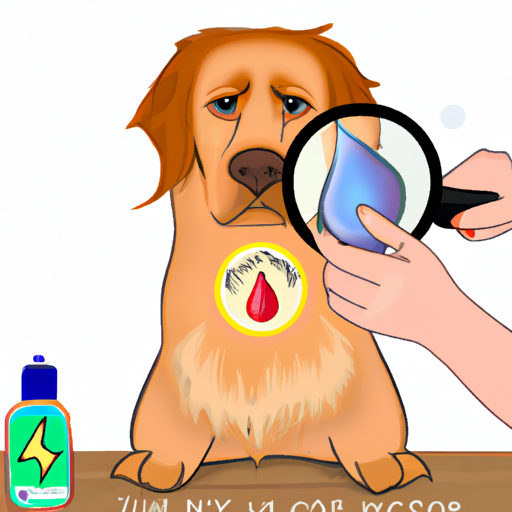Hot spots, or acute moist dermatitis, can be a common issue for our canine companions. This condition can cause your beloved pet discomfort and, if left untreated, may lead to severe skin infections. In this article, we are going to tackle how you, as a caregiver, can stop hot spots on your dogs.
Understanding Hot Spots
Hot spots are red, moist, irritated patches of skin that can appear suddenly and grow rapidly. They can be caused by a variety of factors such as allergies, insect bites, poor grooming, and underlying health conditions.
- Allergies: Just like humans, dogs can also have allergies. This could be to certain foods, environmental factors like pollen or dust mites, or even to their own fur.
- Insect Bites: Insect bites can cause intense itching which can lead to hot spots. Fleas are a common culprit, but other insects can also cause this.
- Poor Grooming: Dogs that aren’t groomed regularly can develop hot spots. This is especially true for breeds with dense undercoats.
- Underlying Health Conditions: Certain diseases can make your dog more susceptible to hot spots, such as hypothyroidism or autoimmune disorders.
Symptoms and Identification of Hot Spots
Hot spots are usually not difficult to identify. They are red, moist, and often have a foul smell. Your dog may also excessively lick, chew, or scratch the affected area. Early detection and treatment are crucial to prevent the condition from worsening.
| Symptoms | Description |
|---|---|
| Redness | The skin appears red and inflamed |
| Moisture | The spot is damp and may ooze pus |
| Smell | There’s often a foul odor coming from the spot |
| Excessive grooming | The dog licks, chews, or scratches the area excessively |
Treating Hot Spots at Home
Before starting any treatment, it’s important to seek veterinary advice to ensure your home remedies are safe and effective. Here are some steps you can take:
- Trim the Area: Carefully trim the hair around the hot spot. This will allow the skin to breathe and dry out.
- Clean the Area: Use a mild antiseptic to clean the area. This can help to reduce the number of bacteria and promote healing.
- Apply a Topical Treatment: Apply an over-the-counter topical treatment specifically designed for hot spots. These often contain hydrocortisone to reduce inflammation and itching.
- Prevent Further Irritation: Prevent your dog from licking or scratching the area by using an e-collar, or cone.
Preventing Hot Spots
Prevention is always better than cure. Here are some preventative measures you can take:
- Regular grooming keeps your dog’s coat free from mats and reduces the chance of skin irritation.
- Keep your dog’s skin dry, especially after a bath or swim, as moisture can trigger hot spots.
- Regular flea and tick prevention can prevent bites that may cause hot spots.
- A healthy diet can boost your dog’s immune system and help to prevent skin conditions.
FAQ
Q: Can hot spots spread to other areas of the dog’s body?
A: Yes, if the underlying cause isn’t addressed, hot spots can appear in other areas of your dog’s body.
Q: Can I use human medication on my dog’s hot spots?
A: It’s not recommended. Some human medications can be harmful to dogs. Always consult with your vet before applying any medication.
Q: How long does it take for a hot spot to heal?
A: With proper treatment, hot spots should start to improve within a few days and completely heal within a week.
Q: Is it necessary to visit a vet for hot spots?
A: While mild cases of hot spots can be treated at home, it’s always advisable to consult with a vet to rule out any underlying conditions and to ensure the most effective treatment.
In conclusion, as a caregiver, your role is crucial in managing and preventing hot spots on your dogs. Early detection, immediate treatment, and consistent prevention are the keys to ensuring your furry friend stays comfortable and healthy.



